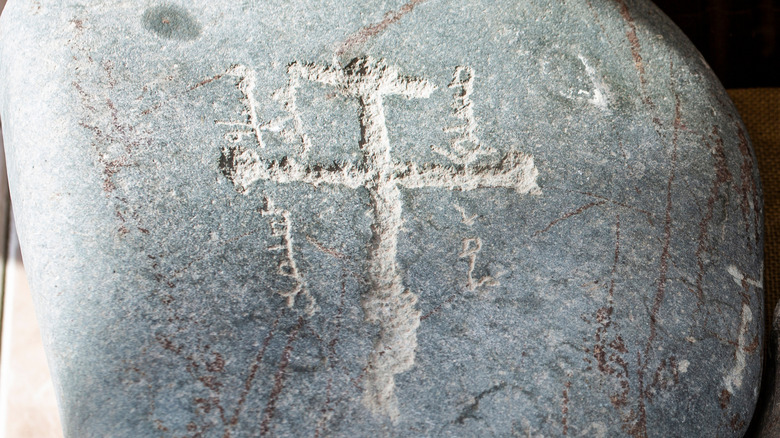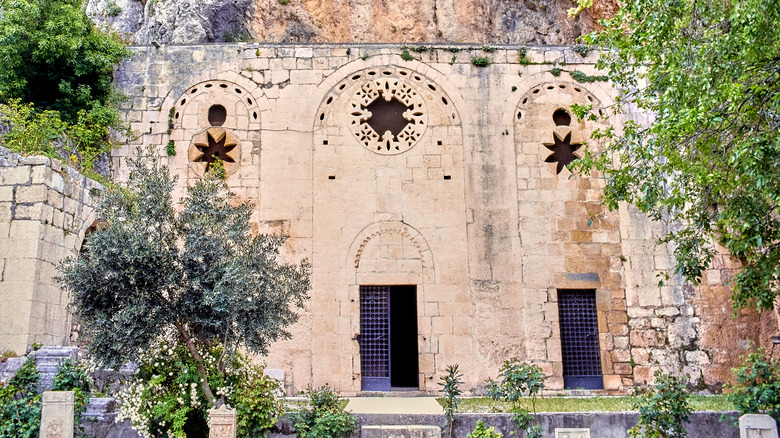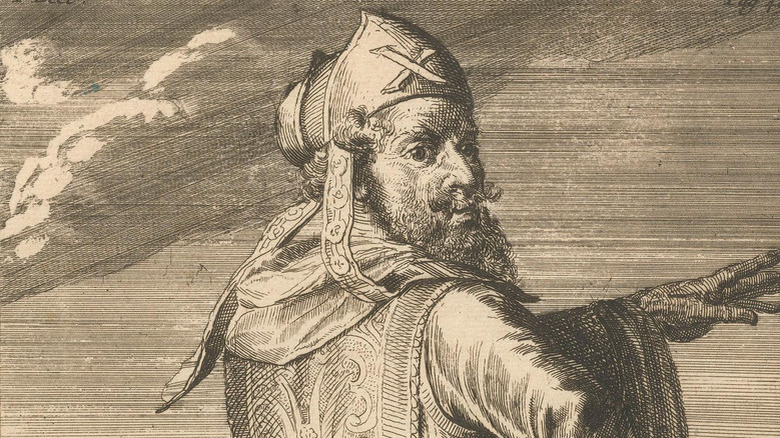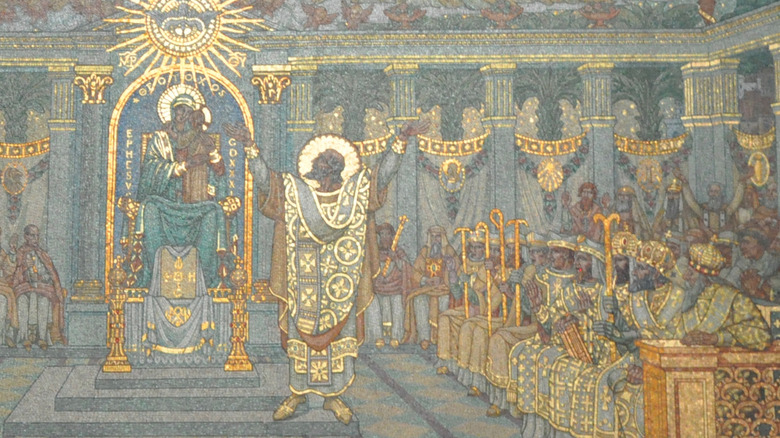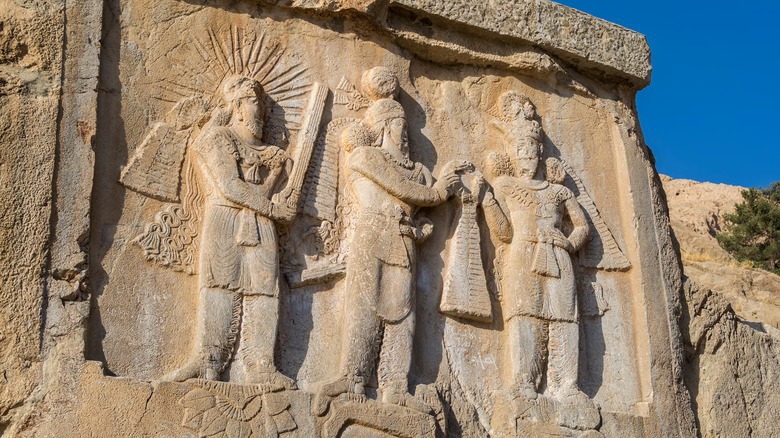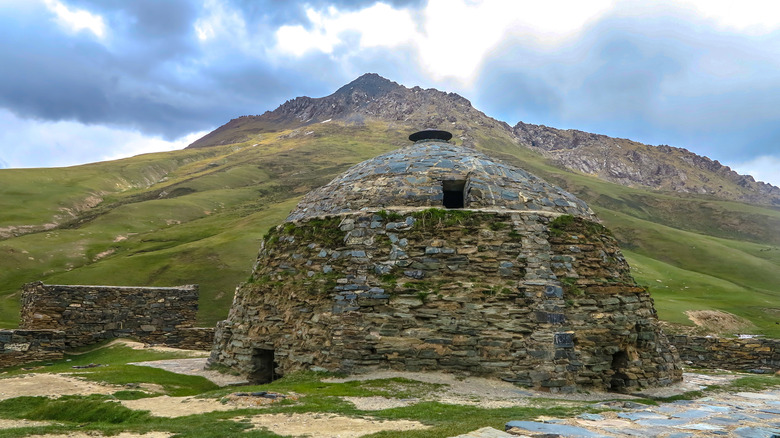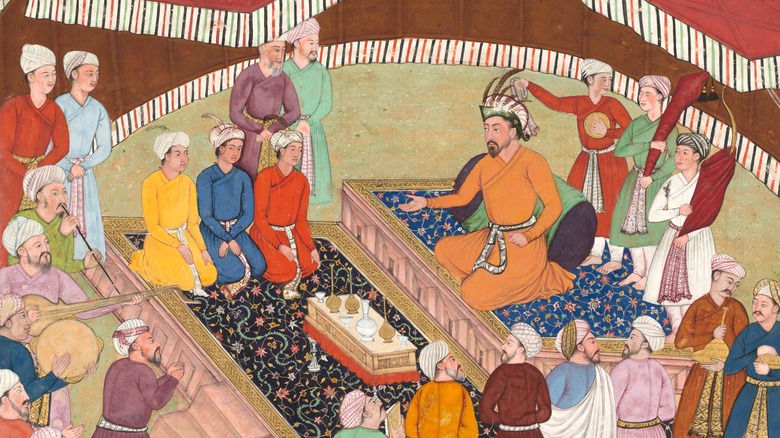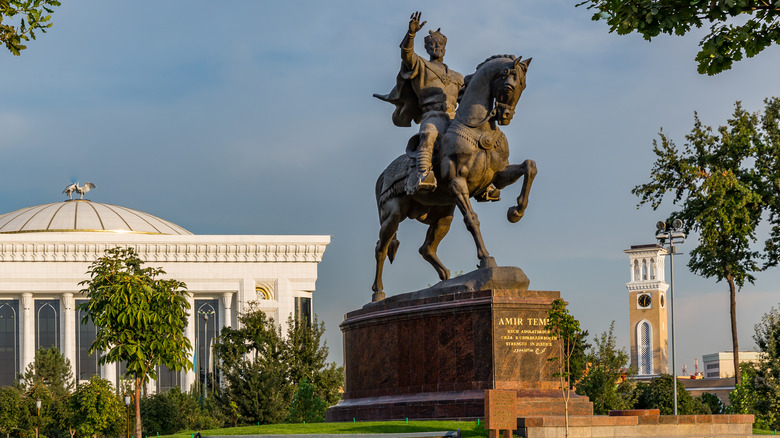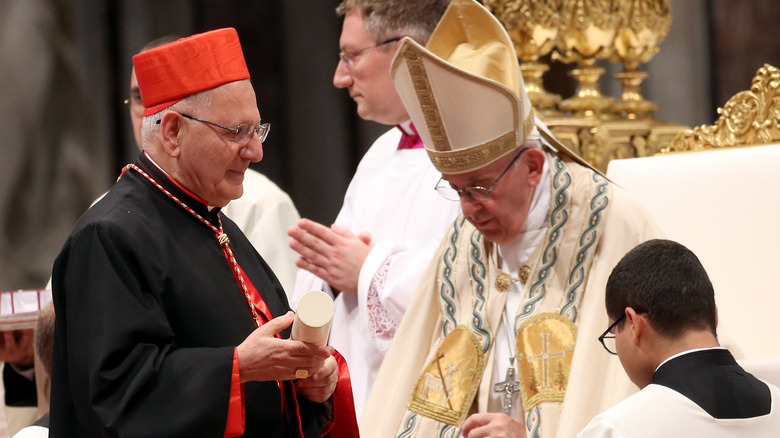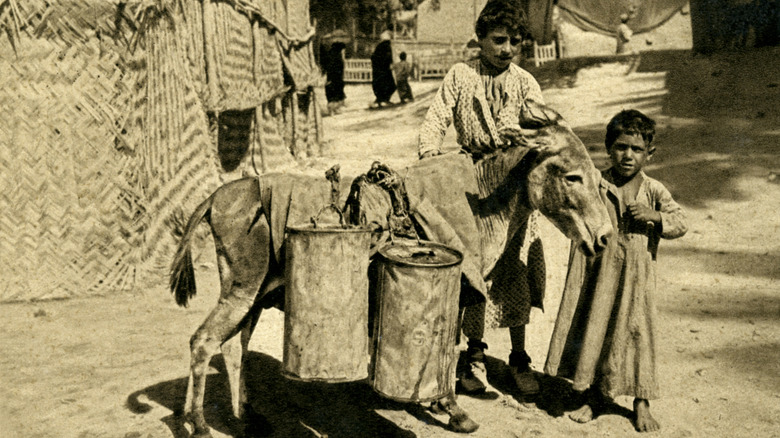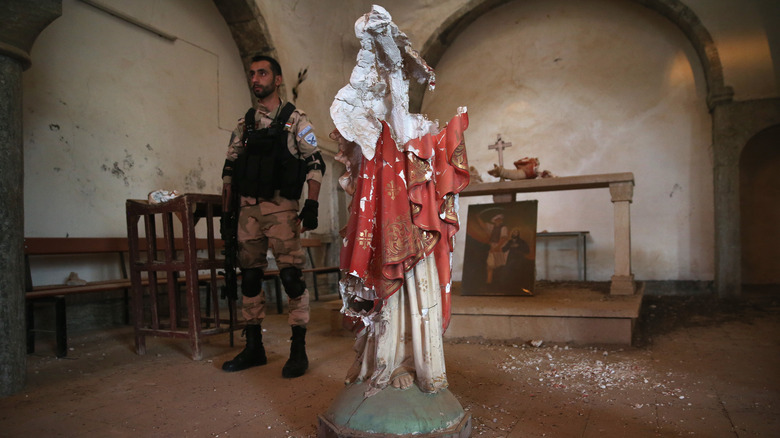The Untold Truth Of Nestorianism
The word "Nestorianism," strictly speaking, refers to a fifth-century heresy of the patriarch of Constantinople, Nestorius. It is a story of complicated theological debates that confounded even experienced theologians with their detail. But the story of Nestorianism goes well beyond theological minutiae, encompassing the fascinating and untold story of the first Christians of Asia.
The story Church of the East (aka the "Nestorian Church") is virtually unknown outside of academic circles. Christianity is popularly considered a European religion brought to Asia by force and colonialism, but the Church of the East completely contradicts that notion. This article presents how the Church of the East, through zealous missionaries, brought the Gospel to the many peoples of Asia, appearing in numerous unique, local manifestations of the Christian faith. This story continues to inspire the Church's Assyrian descendants to protect their valuable heritage and cling to their ancient faith against brutal persecutions that continue to this day.
The Antiochian outsider
The Nestorian heresy was an unexpected one that began with the Patriarch of Constantinople. Britannica records that Nestorius was a monk from the Syrian city of Antioch. Not being an insider within the Constantinopolitan clergy, his appointment was somewhat unexpected. However, he was known for his eloquence, deep knowledge of the Christian faith, and, perhaps ironically, his orthodoxy. These qualifications led Eastern Roman emperor Theodosius II to appoint him patriarch over protests from some of his rivals in A.D. 428.
According to the Catholic Encyclopedia, Nestorius quickly set to work, confiscating churches and lands of heretical sects in Macedonia and Anatolia. For those sects he was unsure of, he ensured that he had the pope proscribe the heretics instead. This was hardly the profile of someone that would soon be accused of heresy himself. However, Nestorius came to his position at a time when theological debates (in other words, minefields) on Jesus' exact identity had not yet been settled. As patriarch of Constantinople, Nestorius naturally threw himself into one of the debates. It would prove his undoing.
Politics or religion?
According to the Assyrian Church of the East, Nestorius came to loggerheads with his rivals when he preached a sermon that elevated the Virgin Mary to what he believed to be above her proper place in the Christian faith. However, anything regarding Mary also involved Jesus and his divinity. Two of Nestorius' Constantinopolitan rivals, who had been competing candidates to the patriarchate and fell on the opposite side of the debate, promptly denounced him as a heretic. This brought the attention of a much more dangerous rival: St. Cyril of Alexandria.
Nestorius and Cyril did not like each other. They were political rivals, but they had theological disagreements as well. The Christological debate is too complicated to present here, but in a nutshell, the two men agreed that Jesus was both human and divine. However, they disagreed as to how exactly Jesus could be like this. In their correspondence, Cyril accused Nestorius of downplaying or even outright denying Christ's divinity, while Nestorius accused Cyril of the same with regards to Christ's humanity.
According to the Catholic publication Conciliar Post, Cyril did not accuse his rival of heresy directly. Instead, he asked Nestorius to affirm or deny 12 statements before a church council. Nestorius would either have to affirm, handing Cyril the victory, or defend himself against a large portion of the church backed by the pope.
The rigged council
Cyril's trap was the Council of Ephesus in A.D. 431. Nestorius and Cyril appealed to Emperor Theodosius II and Pope Clement I, who had called the council the previous year. Unfortunately for Nestorius, Cyril would be the dominant force at the council. The stage was set for Nestorius to be condemned for heresy, although as the Assyrian Church of the East notes, it is unclear if he taught what he was accused of.
At the Council of Ephesus, Nestorius was accused of what amounted to a denial of Christ's divinity and turning him into a mere man. To ensure Nestorius' conviction, per Livius, Cyril took steps to isolate his rival. The council began its proceedings before Nestorius' supporters from Antioch arrived. When they finally did, they were pressured to abandon him, leaving Nestorius to face his accusers alone. The council had turned into a trial.
The result was a foregone conclusion. Nestorius made no attempt to defend himself but refused to recant anything. He and his alleged teachings were anathematized (declared accursed), and Nestorius returned to Antioch. He would live out the rest of his days in the deserts of Upper Egypt.
The Council of Chalcedon in 451 reiterated Ephesus' conclusions but, ironically, also declared the Alexandrian Church, which included some of Nestorius' accusers, to be heretical. They separated and formed the Coptic Church. Nestorius' followers did not need to form their own church, though. Instead, they lent their leader's name to one that already existed.
Nestorius' followers defect to Persia
Nestorius' followers decided to leave the Roman Empire for more sympathetic ears. According to the University of Washington, they fled to the east, into the territory of Rome's archenemy, the Sassanid Persian Empire. There, they joined the Church of the East, which, in the Roman world, would become known as the "Nestorian Church."
Despite Nestorius' association with the Church of the East, neither he nor his followers founded it. As Encyclopedia Iranica notes, Christians had been present in Persia since the religion's earliest days. They faced persecution and were viewed as potential collaborators with the Romans once the Roman Empire became Christian. As their numbers grew, the Sassanid government decided to co-opt its Christian population and separate it from Rome.
Under Emperor Yazdegerd I, Persia's Christian clergy came together at the Council of Seleucia-Ctesiphon (aka the Council of Mar 'Ishaq) in 410 to form the Church of the East, electing their own leader called a katholikos. Within a few years, the church broke all relations with Rome under Persian political pressure and declared that it would not look west for theological guidance.
Interestingly, the Church of the East had very little to do with Nestorius or Nestorians. Roman Christians began referring derogatorily to the Church of the East as the "Nestorian Church" to associate it with heresy. But the Church of the East had already been growing in leaps and bounds by 431 and, thanks to its geographic position in Iraq and Syria, was poised to break ground in the evangelization of Asia.
The first Christians in Asia
When Nestorius' followers arrived in Persia, the Church of the East already had a large following in Iraq, Syria, India, and parts of Iran. Now, as Cardinal Louis Raphaël Sako recounts, the church's missionary zeal brought the Gospel to Central Asia. Christian missionaries, according to the World Council of Churches, followed in the footsteps of Thomas the Apostle, proselytizing along the Silk Road deep into Asia's interior. This ancient trade route brought silk and other luxuries from China and the Far East to Eurasia through a network of trading posts and caravan routes that crossed Central Asia and the Middle East.
The main hub of trade was in Sogdia, an ancient region that encompassed parts of the Central Asian republics and the modern Chinese province of Xinjiang. The region's language, Sogdian, was considered the language of trade and commerce. Sogdia's cities, such as Kashgar and Samarkand, were religiously diverse areas that hosted a flourishing Christian culture. According to the Smithsonian Institute, Christian texts were translated into the local language, and churches, including a cathedral in Samarkand, were built. Sogdian merchant converts acted as go-betweens for Aramaic-speaking missionaries to spread the faith north to the Turkic tribes of the Central Asian steppe.
The foray into the Middle Kingdom
Today, the Chinese Communist Party considers Christianity a subversive Western import. Although mostly associated with 19th-century colonial ventures, China's experience with Christianity goes back much earlier. In fact, the religion has been present in China for at least 1,300 years, thanks to the Church of the East.
During the reign of the Emperor Taizong (626-649), the church's missionaries reached China. According to a magnificent stela unearthed in the Tang Dynasty's capital Xi'an, these Christian missionaries were brought before the emperor, who showed a keen interest in their message. After a period of debate and study of translated Christian scripture, Taizong was convinced of Christianity's merits, although it does not seem he converted. Instead, he allowed the religion to flourish in China, and churches and monasteries were built, including under the patronage of Taizong's successors, whose portraits, according to the stela, adorned places of honor in the churches.
Although Christians were a minority in China, the stela suggests that they were highly influential. The end of the stela names priests who also served as officials in the imperial court, facilitating the entry of Syriac missionaries into China and intense contact between China and the Middle East. However, the Church's triumph would be short-lived. According to historian John Dardess, under Emperor Wuzong, what began as anti-Buddhist purges expanded into a campaign to purge China of all religious influences deemed foreign. The Church of the East's properties were liquidated and its clergy expelled.
And they pressed on to new frontiers
While success in China was undoubtedly the Church of the East's biggest achievement, its expansion did not stop there. Archaeological evidence suggests that missionaries pushed even further east and south into Malaysia, Southeast Asia, and possibly even Japan.
Missionary activity created small communities of Christians throughout Asia. The Christian Century notes that Katholikos Timothy appointed a bishop in the ninth century to preside over a Christian community in Tibet, whose existence has been verified through finds of crosses and other personal items. The Encyclopedia of Malaysia notes that Syriac traders brought Christianity to the Malay peninsula as early as the seventh century. Christians fleeing China found refuge in Southeast Asia, especially Thailand, where they were attested in the 16th century, to the shock of Catholic missionaries. The biggest surprise, however, is in Japan.
Readers might be familiar with the movie "Silence," Martin Scorsese's take on the suppression of Japan's underground Catholic community in the 16th century. Much like China today, Japan considered Christianity a foreign import. But was it? According to Reverend Ken Joseph, it was not: The religion had arrived in Japan in the fifth century. This controversial theory, as Notto Thelle notes, has not been disproved and has a solid basis pointing to at least one clearly Christian monument on the Buddhist sacred mountain of Mt. Koya. Ultimately, more research is needed, but if Christianity did reach Japan in the fifth century, it would rewrite the history of Asia and of Christianity.
A Franco-Mongol Christian alliance?
According to the University of Illinois, Nestorian Christianity occupied a place of prestige among the Mongol khans. Genghis Khan's inner circle included Nestorian tutors, wives, and advisers drawn principally from the Christian Kerait tribe. As the Mongol juggernaut steamrolled Asia, Mongol Christians encountered Catholic crusaders seeking to reconquer Jerusalem. Reaching out to each other as long-lost brethren, the two sides flirted with an alliance against their common Muslim opponents. The most famous example is the correspondence between King St. Louis IX of France and Genghis Khan's grandson Hulagu of the Ilkhanate.
Hulagu Khan (pictured) was no Christian. However, his mother and favorite wife were. It is safe to say, therefore, that Christianity held considerable influence in the Mongol court. Hulagu's destruction of the Muslim Abbasid Caliphate and the sack of Baghdad made Hulagu a sort of celebrity in Christian Europe. The khan and the crusaders began to explore a possible alliance to wrest Jerusalem from Muslim Egypt, their common enemy.
The first Mongol invasion of Egypt failed in 1260. According to Encyclopedia Iranica, Hulagu decided to court the pope and Western European crusaders for help. He offered the church's most zealous crusader, St. Louis IX of France, and Pope Urban IV an alliance if Louis would invade Egypt by sea. Pope Urban IV was delighted and encouraged Hulagu to renounce paganism and become a Christian while commending the khan's desire to aid the crusade. However, they could not sort out the status of Jerusalem before Hulagu's death in 1263, passing up a golden opportunity to expel the Egyptians from Jerusalem.
The grand collapse
In the 14th century, according to Crisis Magazine, the Church of the East was the largest Christian church in the world. From Syria to China (where it had returned after the Mongol conquest), its clergy enjoyed prestigious positions as advisors and doctors to sultans and khans alike. And yet, in less than a century, all of this was reduced to virtually nothing. What happened?
Fate dealt the Church of the East two cruel blows in the 14th century. First, as History notes, the Black Death quickly spread from China along the Silk Road through Central Asia and the Middle East. Many Christians, already a regional minority, along with millions of others, perished. Matters only worsened after the plague with the appearance of the Turkic warlord Timur-e Leng, better known as Tamerlane.
Tamerlane claimed descent from Genghis Khan and sought to recreate the Mongol Empire. From his base in Samarkand in modern Uzbekistan, his armies swept across Asia, reaching the Aegean coast of Turkey in the West and China in the East. His forces mercilessly slaughtered civilian populations in the name of holy war. As Crisis Magazine notes, Christians in particular felt his wrath. By Tamerlane's death in 1405, the Church of the East had lost virtually every single bishopric east of Iraq (except India). The church's leadership fled to Northern Iraq, having lost virtually everything. The hard times did not end here, as schism, persecutions, and genocides would test the Church of the East in the coming centuries.
The hereditary church and the Schism of 1552
In the 15th century, the Church of the East's situation was dire. Historian Fernando Filoni explains that the church's reduced size made it vulnerable to outside manipulation, particularly by Muslim authorities who sought to bend it to their will. The leadership closed ranks and, in a surprising turn of events, ensured that under no circumstances would the leadership fall to someone that was not a devoted member of the church.
As Crisis Magazine explains, Katholikos Shimon IV made his position hereditary. The title of katholikos would pass from uncle to a celibate nephew, since all bishops had to be celibate. Although the plan looked good on paper, the usual nepotism and corruption crept in, leading to a schism that would send a handful of the church's faithful fleeing headlong towards Rome.
Shimon's system held until 1539, when Shimon Ishoyahb VII became katholikos. He caused controversy by appointing his teenage nephews as successors and allegedly violating celibacy rules with concubines. In 1552, a group of dissident bishops elected its own katholikos, a man named Sulaqa. Eventually, this group of clergy and their successors accepted papal authority in 1780 and is known today as the Chaldean Catholic Church. Among the clergy that did not become Catholic, rivalries over the patriarchate resulted in several competing lines. These branches eventually resolved their differences in the face of persecution from their Kurdish and Ottoman overlords and re-emerged in the 19th century as the Assyrian Church of the East.
The bloody 20th century
The emergence of the Assyrian Church of the East from the ruins of the old Church of the East coincided with the rise of nationalism and self-determination. During World War I, as the Ottoman Empire crumbled, Assyrian Christians began to dream of their own state or autonomous region where they could practice their faith free of persecution. Unfortunately, the First World War brought only more misery to an already embattled community.
According to Assyrian historian Abraham Yohannan, the Ottoman authorities began systematically rounding up and exterminating not only Armenians in Eastern Anatolia but also Assyrians, Greeks, and Yazidis. Turkish commanders and Kurdish paramilitaries emptied out villages, took women as sex slaves, and destroyed churches. Around half a million people perished, per Armenia's public radio, while the most ancient communities of the region, Greek, Assyrian, and Armenian, were destroyed and lost forever. For Armenian prime minister Nikol Pashinyan, this was the real tragedy, as the Turks had distorted and rewritten the region's history by killing those who had created it.
Assyrians, Greeks, and Armenians alike fled to Iraq and Syria, where they found some shelter from war and persecution under secular Ba'athist dictatorships. The Assyrian community would enjoy a relatively peaceful existence with intermittent spasms of violence, Despite the challenges, they grew into highly educated, vibrant communities that, before 2014, numbered over one million.
Into an uncertain future
The 2003 American-led invasion of Iraq reignited sectarian tensions between rival Muslims and shattered the calm Christians enjoyed. The ensuing anti-Christian violence included church bombings and the murder of Chaldean archbishop Paulos Rahha. But the worst would soon come, putting the Assyrian people and their faith through their toughest test.
According to NPR, ISIS ran rampant among Iraq and Syria's Christian communities, destroying churches or turning them into mosques and killing their parishioners. The BBC reported that Assyrian Christians were given the option to accept Islam, pay protection money, or leave/die. Captured women became ISIS fighters' sex slaves, as reported in the New York Times. This horrific genocide largely went unrecognized by the Obama administration, which politician Elliott Abrams accused of favoring unvetted Muslim refugees over persecuted Christians.
The mass murders devastated Assyrian communities, cutting the populations in their homelands by over half. Confronted with declining numbers and Muslim persecution, Cardinal Sako proposed reuniting the three Assyrian churches into a new Church of the East under the pope and give the faith a new, unified direction. This has not yet happened, but perhaps circumstances will lead to it. Assyrian Christians continue to serve as not only incredible witnesses to the Christian faith but also a reminder that at one time, they evangelized the world in obedience to the command to bring the Gospel to all nations.
